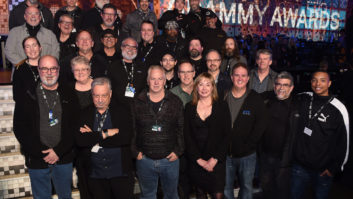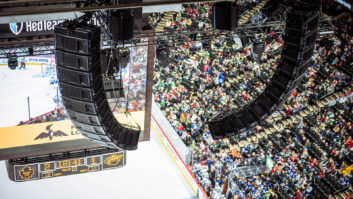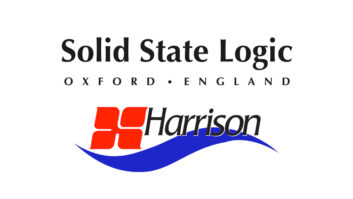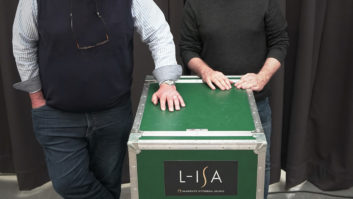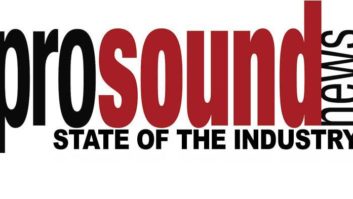
This will be a year to remember. Heading into the Y2K election year,there will be a lot of special events, and everyone who’s not on tour(or on the guest list) will be buying concert tickets “like it’s 1999.”At the same time, changes in both the business climate and technologyare transforming the craft of live sound. A sample of opinions from afew leading North American sound companies reveals the outlook forsound reinforcement in the last months of the 20th century.
CHANGES IN THE BUSINESS ENVIRONMENT Everyone we spoke to predictedtighter competition for touring services. “I see the standard kind oftours that have gone out for the past 20 years on a downward cycle,”notes Ken Porter of Spectrum Sound, Nashville. Increased competitionfor entertainment dollars and leisure time has created a “spectaclementality” that favors large-scale productions, which in turn seem toget larger just to show a profit for everyone concerned. And, whereasan act’s touring sound company could once operate fairlyauto-nomously-separate from lighting, video projection andconcessions-today’s production extravaganzas require a great deal moreco-operation and multitasking. “The sole focus of a touring soundcompany used to be doing the best possible job, right down to the J-boxon stage,” notes Dave Shadoan of Sound Image, San Marcos, Calif. “Todayeverybody is doing an exceptional job, but when you have to diversifyinto other areas, you lose some of your focus.”
Another trend that many noted is that the length of tours hasshortened. With shorter tour legs, trucking expenses make up a pro-portionally larger chunk of the budget. Michael Jackson of Pro-Media(www.promediausa.com) points out that more acts are picking up qualityregional sound instead of carrying one company across the country. John”Klondike” Koehler agrees. “An artist can head for a particular regionand pick up a company with state-of-the-art speakers for less than itwould cost to bring it across country,” says Koehler, who sees regionaltouring as the greatest growth area for mid-sized companies. In fact,Klondike Sound (www.klondikesound.com) has built a solid reputation inNew England as a regional vendor, but is also touring for the thirdyear with folk phenom Ani DiFranco.
“There’s an increasing impetus to look at the bottom line in tourservice bidding,” says Tom Source of A-1 Audio, Los Angeles (www.a1audio.com). “The market is very competitive, not only for top-qualityaudio, but also good value.” Source points out that larger pro audiocompanies are making increased efforts to diversify, so that no singlemarket segment controls cash flow.
CONSOLIDATION “The most interesting change that’s not over yet insound is the consolidation trend, not just from content providers, likeSFX, but also on the service provider end,” continues Source. “Bybuying Bash, Cinema Services, LSD, Vanco, Production Arts and Roth,Production Resource Group [PRG] has already become the world’s largestlighting company, and I think a similar consolidation will happen inaudio.” The recent merger of UltraSound and ProMedia, Clair’s purchaseof MD Systems, and PRG’s acquisition of ProMix underline thisconsolidation trend and illustrate efforts to provide packagedproduction services to large users who prefer to deal with a singlevendor.
Source points to the economy of scale that can result whenduplicated resources are eliminated. “Let’s say you have three audiocompanies in a metropolitan area,” he explains. “If they consolidate,they can increase the market base while decreasing overhead.” Frontoffice and transportation costs could be lower, while inventory can beexpanded from the larger pool of resources being applied to a widermarket. “I do believe the margins are there if the administration isproperly thought through and there are savings in the consolidation,but you still have to maintain a high level of customer service andsupport,” Source adds. “The fourth leg of the table is the betterutilization of assets.” He notes that the success of suchconsolidations will be determined by the new companies’ ability tomaintain service and profits while at the same time merging a varietyof cultures.
“In the corporate realm, there has also been a roll-up of smallcompanies into large firms like Carabiner, AVHQ and PGI,” addsProMedia’s Jackson. “Some are handling this transition better thanothers, but they no longer need to subcontract entertainment packagesfrom traditional vendors because of the inventories they’ve accumulatedthrough consolidation. On the other hand, many individual corporateproducers who used to work for the smaller companies are now workingindependently and appreciate the personal touch we bring.”
TRENDS IN TECHNOLOGY The old adage that “a good engineer can makeany P.A. sound good” has always been true, but the number of qualityconcert systems on the road from a variety of vendors has never beengreater, largely due to past and current investments in bettertechnology. However, many of those interviewed predicted that agenerational change in technology will soon begin. “Pro audio is goingto become more digital, eventually migrating all the way to the poweramps,” suggests Scott Harmala, director of engineering at AudioTek(www.atkcorp.com). “Some day the quality of digital sound will comeclose enough that you’d be hard-pressed to tell it from analog, but thepotential for signal integrity throughout a large, complex system, plusits recallability and resettability, are the real keys to [digital’s]future success.” Harmala points out that the biggest challenge facingmanufacturers is connectivity and interoperability of digital controland signals. “Maybe the AES spec is the way to go,” he comments. “It’sdifficult to get everybody to agree on a particular format or protocol,but it’s simply got to happen for digital technology to break loose.”The AES standard will be published later this year.
“There are a few manufacturers that have already developedtechnology that is close to the proposed standard,” says Jeff Barrymanof Jason Sound (www.westsun.com), who chairs the AES’s SC-10-2committee. He expects that other manufacturers with proprietarytechnology will soon produce gateways to translate to and from thestandard protocol, including MIDI gateways. “I’ll go out on a limb andpredict that by this summer we’ll have it,” Barryman says.
Barryman further comments that touring sound systems are less oftenconfigured in the traditional “monolithic” style. “We’re seeing a lotof work where the venue size varies radically over the course of asingle tour,” he explains. “That, plus the trend towarddiversification, whereby inventory utilization is maximized, is forcingus all to make our systems more versatile and flexible.” Barryman alsonotes a resurgence of interest in line arrays. “There’s a lot of soundcompanies laughing quietly because they’ve been doing this for years,”Barryman comments, “but I must say that V-DOSC has brought a level ofanalytical precision to the management of line arrays for which theydeserve a lot of credit.”
“Lightweight amplifiers have, at long last, been accepted as viableproducts,” adds Koehler. “I think we’ll see other manufacturersfollowing suit.” Another trend that he and Jackson point out is theacceptance of self-powered loudspeakers, which can provide benefitsincluding fewer racks, less truck and stage space, quicker setups andmultiple zones control. “It seems like P.A.s are getting smaller, and Ithink that’s because manufacturers are getting better,” Jacksoncontinues. “We’ve had a couple of situations where the artist’sengineer has pre-judged the speakers’ ability because of their size,when in fact they were more than enough.”
DIGITAL CONTROL AND MEASUREMENT FFT measurement of speaker systemsvia either SIM or Smaart Pro is becoming the standard rather than theexception. As laptops improve and their costs come down, it becomesmore practical to set up and optimize sound systems with the aid ofsoftware. “One nice thing about Smaart Pro is that it speaks MIDI, andyou’re able to have your computer add some speed and convenience tosetting EQ filters,” notes Jackson. Koehler adds: “I’m interested insolving acoustical problems without more processing.”
Source notes the increased use of digital control devices from BSSand XTA. “Even if a [loudspeaker] manufacturer has a processing box,these are getting substituted,” he points out. “Also, thecommunications backbone has become a critical link in large specialevents, which is why we’ve made investments in fiber optics andswitching technology.”
Harmala acknowledges the role fiber plays in large-scaleproductions, but points out that swapping the passive copper wires in atraditional snake to something that’s active can introduce gainstructure problems. For example, splitting the digital signal to thevarious consoles used in live sound poses a knotty gain managementproblem, since someone has to control the gain stage at the head end ofa digital transmission system. “Sooner or later, someone is forced totweak a channel’s trim so that their fader is in the right place,affecting the operators of the other consoles which now all livedownstream of the first preamp,” Harmala explains.
Not everyone is fully committed to digital control. “We’recontemplating leaving the digital domain,” reports Shadoan of SoundImage. “After five years of trying digital processors, we’ve concludedthat our P.A. never sounded as good as with our old Phase-Loc analogcard-frame crossovers, and we want to take that a step further. Rightnow we’re in the process of researching a system controller for our G-5speakers using Class A circuitry.” Besides an all-analog drive rack,Sound Image is refining the “above-the-box” rigging on the bumper-barside of their speakers and also completely re-engineering their drivesnakes. “We’re going to new connectors borrowed from the aerospaceindustry,” says Shadoan.
LOOKING FOR NEW PRODUCTS Digital consoles were last year’s buzz inthe studio industry, and everyone we spoke to is looking forward to adigital board that will interface with outboard electronics processingat the FOH position. “We’re also looking into 24/96 technologies-newdigital front end components we buy will meet that standard,” saysSource, who is also examining alternatives and improvements in AC powerand distribution, particularly balanced power.
“We’re waiting for a couple of players to come to market with theirdigital console,” notes Harmala. “Our approach to new technology is toembrace it, yet be very cautious until we’re confident and it’s provenitself. We do a lot of multiple-act shows, so resettability is a bigissue for us.”
Jackson is also waiting for a satisfactory digital live console. “Oncurrent digital live consoles, if I have to make a really fast EQ moveon a channel, I’ve got two or three buttons to push before I can adjustthe EQ,” he notes. “I have yet to see a nice hybrid-a console thatfeels comfortable, has the benefits of instant recall and doesn’t costa million bucks.”
“We bought a lot of stuff this past year,” was a common response.”We’ll concentrate on width in inventory that enables us to serve abroader market with more simultaneous deployment,” says Koehler. “I’dlike to see the [Meyer] PSW-6 on a smaller scale. It’s an incredibleproblem solver, but it’s a bear.”
“Our inventory includes loudspeakers and amplifiers that we’lleventually replace,” notes Jackson. “Immediate efforts have been ‘nutsand bolts’ oriented, trying to make the gear that we have do more, bemore flexible and work in more different situations. We’re not lookingfor any big-ticket items just now.”
Perhaps the last word belongs to Sound Image’s Shadoan, who pointsout that the return on investment in the sound rental business has beendeclining for years. “Sure, shorter tours and tighter budgets [havehurt profitability], but I think ticket sales were off,” Shadoan says.”I look at the movies as a parallel industry that was in trouble andkind of reinvented itself, from both a marketing and a technologicalstandpoint; we need to do the same.”
